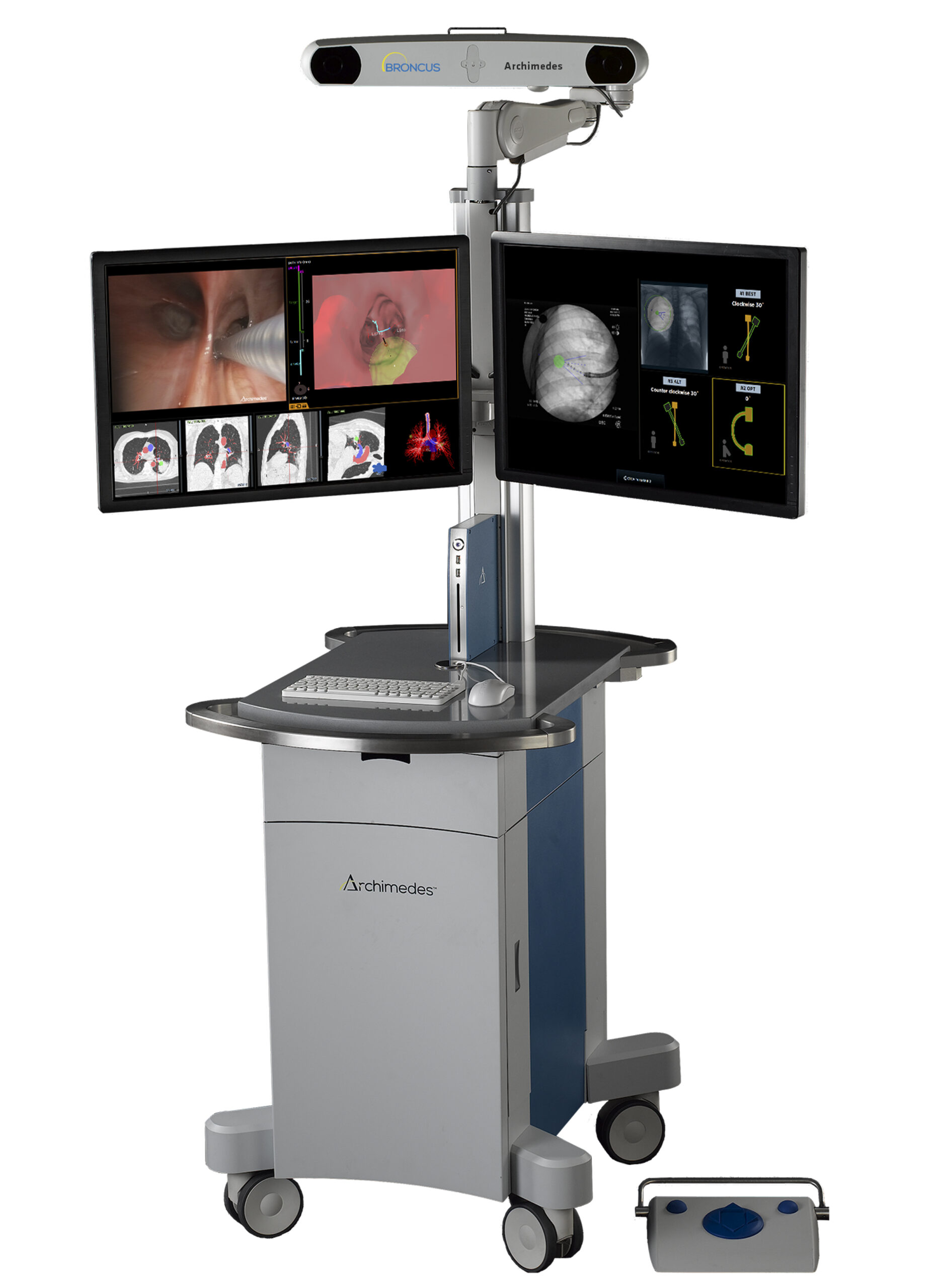An innovative, safe and minimally invasive lung cancer diagnostic tool is now available at Guy’s and St Thomas’ Specialist Care, and offers new hope to patients at high-risk of complications associated with the current gold standard.
Early lung cancer diagnosis poses a difficult challenge
Lung cancer is the most commonly diagnosed of all types, with over 470,000 new cases reported in Europe in 2018. However, due to the delay in symptoms appearing, it is often diagnosed at an advanced stage, resulting in a poor prognosis – the 5-year survival rate is currently 9% and caused an estimated 1.8 million deaths worldwide in 2018.
Chest CT screening has offered a promising improvement in lung cancer prognosis, with data indicating a 20% reduction in lung cancer mortality. However, almost a third of patients undergoing screening have at least one pulmonary nodule which requires further diagnostic assessment.

A safer approach
The current gold standard for investigating pulmonary nodules is CT-guided percutaneous transthoracic pulmonary biopsy. This approach achieves high sample yields to assist with diagnostic accuracy but can lead to significant complications such as pneumothorax, particularly amongst emphysema patients.
Thankfully, a new minimally invasive bronchoscopic technique is now available which enables safe access to pulmonary nodules even when they are beyond the limits of the airways. The innovative Archimedes® Virtual Navigation System integrates CT, pattern recognition software and fused fluoroscopy to provide three-dimensional, real-time airway Guided Transbronchial Needle Aspiration (TBNA) and Bronchoscopic Trans-Parenchymal Nodule Access (BTPNA) to collect biopsy samples with accuracy.
The advanced technology enables blood vessels to be identified to ensure a safe, non-vascular path during both Guided TBNA and BTPNA procedures. In addition, the Archimedes system assists respiratory physicians to identify multiple targets, regardless of location in the lung, to enable multiple biopsies to be performed with minimal additional risk.
Results from a cohort of 25 patients demonstrated a high diagnostic yield of 85%, and there were no pneumothoraces reported despite over half the nodules sampled being within 1cm of the lung edge.
Exciting new possibilities
“This is a really exciting new technology. We see it offering a safe alternative to the traditional CT-guided transthoracic approach – particularly for high-risk patients such as those with emphysema. We are therefore very pleased to be the first UK centre to offer this service,”
“It also has the potential to reduce waiting times for lung cancer biopsies, to hopefully improve outcomes for these patients.”
“Additionally, due to co-morbidities and older age, up to a third of patients with potentially curable lung cancer cannot undergo surgical resection. In future, we think this technology may go one step further and provide an opportunity to deliver local treatment to early lung cancers in these patient groups to offer a better chance of a cure.”
– Dr Samuel Kemp, consultant respiratory physician at Royal Brompton Hospital.
Bronchoscopic trans-parenchymal nodule access (BTPNA) with archimedes
The Archimedes system in action. After a non-vascular path to the pulmonary nodule has been mapped out by the advanced software, the Archimedes Sheath is advanced through the lung tissue via the airways to collect a biopsy sample.
